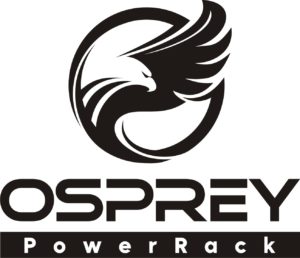Key Takeaways
- Pier foundations are a type of deep foundation used to support solar panels, particularly in challenging soil conditions.
- They are more environmentally friendly compared to traditional concrete foundations, as they require less excavation and use less material.
- Initial costs can vary, but they often offer long-term financial benefits due to reduced maintenance and increased durability.
- Pier foundations may not be suitable for all soil types or extreme weather conditions.
- Nuance Energy’s Osprey PowerRACK® system uses an innovative earth anchor foundation, enabling faster, concrete-free installation and adaptability across diverse terrains.
Pier Foundations for Solar Panels
Pier foundations are essentially vertical columns that are embedded into the ground to support a structure above. They work by distributing the weight of the structure over a larger area, providing stability and support, and are typically made of concrete, steel, or a combination of both. The depth and diameter of the piers can vary depending on the soil conditions and the weight of the structure they need to support. These foundations are particularly useful in areas where the soil is too weak to support a traditional foundation.
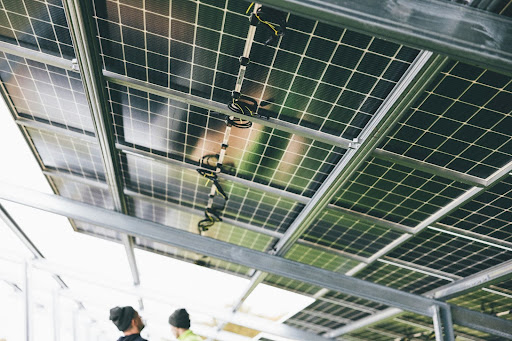
Pier foundations are commonly used in solar installations because they offer a flexible and durable solution for supporting solar panels.
| Nuance Energy is your superior solution for Ground Mount solar. Our patented foundation technology Osprey PowerRACK® allows for rapid installation using only handheld tools, significantly reducing both time and costs compared to traditional racking systems. This cutting-edge technology works for residential and commercial installations, and Nuance Energy empowers solar installers to take back control of their installation schedules, control project COGS, gain market share, increase the speed of installation, and reduce the cost of labor. In contrast, a traditional ground mount is much more unpredictable, slower, and costly.
Find out how Nuance Energy can accelerate your solar projects with the Osprey PowerRACK® line, and boost your profitability. Contact us today to discuss our innovative ground-mount solutions. |
Cost Analysis of Pier Foundations for Solar
Initial Cost Considerations
The depth and diameter of the piers, the materials used, and the complexity of the installation all play a role in determining the overall cost. However, these initial costs can be offset by the long-term benefits that pier foundations provide.
Long-Term Financial Benefits
Investing in pier foundations offers significant financial benefits in the long run. Because they are designed to withstand various environmental conditions, they require less maintenance and are less likely to experience issues such as settling or shifting – this means fewer repairs and replacements.
Comparing Costs with Other Foundation Types
Traditional concrete foundations often have lower upfront costs. However, they may incur higher maintenance expenses over time due to potential cracking or settling issues. On the other hand, pier foundations, while possibly more expensive initially, typically offer reduced maintenance and repair costs, leading to potential savings in the long run.
Besides financial considerations, when choosing between foundation types, you should also take into account the specific needs of your project. For example, in areas with unstable soil, the increased stability provided by pier foundations can justify their higher cost. Additionally, the environmental benefits of pier foundations, such as reduced excavation and material use, can be a significant factor for those prioritizing sustainability.
Nuance Energy’s Osprey PowerRACK® provides an efficient alternative to traditional pier foundations, offering lower labor costs and faster installation due to its earth anchor foundation. This also reduces the need for concrete and heavy machinery, helping to lower overall project costs. Compared to pier foundations, Osprey PowerRACK® may also reduce maintenance and installation time, offering potential long-term savings.
Use Cases for Pier Foundations
Residential Solar Installations
In residential settings, pier foundations are often chosen for their ability to provide a stable base for solar panels without the need for extensive excavation or disruption to the landscape. This is particularly important for homeowners who want to minimize the impact of the installation process on their property.
For example, a homeowner in a region with clay-rich soil may choose pier foundations to avoid the risk of shifting or settling that can occur with traditional concrete foundations.
Additionally, the ease of installation associated with pier foundations can result in faster project completion times, allowing homeowners to start benefiting from solar energy sooner.
Commercial and Utility-Scale Solar Projects
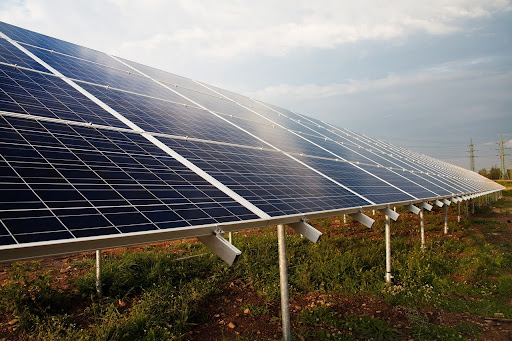
Pier foundations provide stability, structural benefits and other cost advantages for commercial solar racking systems.
Large-scale installations require a robust and reliable foundation to support extensive arrays of solar panels – and pier foundations can deliver the necessary stability, even in challenging conditions.
In addition to their structural benefits, pier foundations also offer cost advantages for commercial projects. Their quick installation with minimal disruption reduces labor costs and contributes to faster project timelines.
Advantages of Using Pier Foundations
Environmental Benefits
- Reduced excavation and material use
- Minimal disruption to the landscape
- Lower carbon footprint compared to traditional foundations
- Increased sustainability and alignment with renewable energy goals
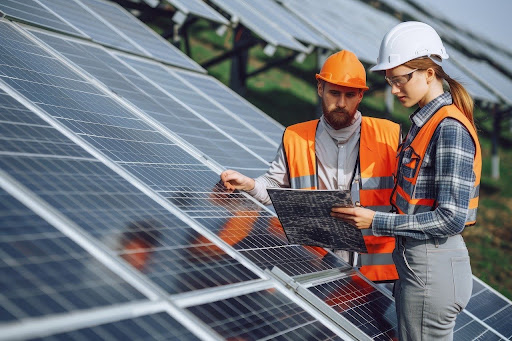
Pier foundations allow for a quicker and easier installation process, in contrast to concrete foundations.
Ease of Installation
Unlike traditional concrete foundations, which require extensive excavation and curing time, pier foundations can be installed quickly and efficiently.
The installation process typically involves drilling holes in the ground and placing the piers, which are then secured in place. This straightforward approach minimizes disruption to the site and reduces the overall time required for installation. As a result, solar projects can be completed more swiftly, allowing for faster energy production and return on investment.
Durability and Longevity
Pier foundations are less susceptible to issues such as settling or shifting, which can occur with traditional foundations in unstable soils. By providing a stable base, pier foundations help ensure that solar panels remain properly aligned and efficient over time.
Disadvantages of Pier Foundations
Potential Drawbacks in Certain Soil Types
In areas with highly compressible or loose soils, the stability of the piers may be compromised. In such situations, additional measures such as soil stabilization or deeper piers may be required to ensure the foundation’s integrity.
Nuance Energy’s Osprey PowerRACK® utilizes real-time pull testing, eliminating the need for detailed geotechnical reports. Its earth anchor system adapts to different soil types, from soft to rocky, ensuring stability in diverse conditions.
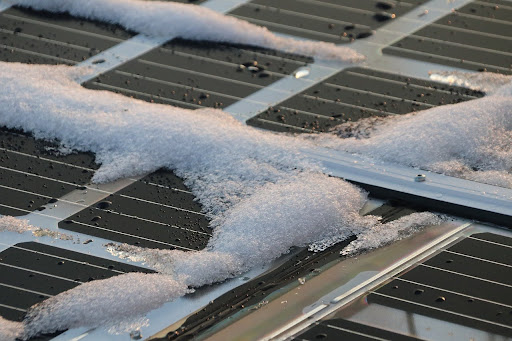
Extreme weather conditions can impact the performance of pier foundations.
Limitations in Extreme Weather Conditions
While pier foundations are generally robust and durable, severe weather events such as high winds, heavy rainfall, or seismic activity can impact their function. In areas prone to such conditions, additional precautions may be necessary to protect the foundation and the solar installation.
For instance, in hurricane-prone regions, deeper and more robust piers are required to withstand high winds and potential flooding. Similarly, in areas with seismic activity, specialized design is needed to ensure the foundation’s stability during an earthquake.
Maintenance Considerations
Pier foundations are generally low-maintenance, however, regular inspections and upkeep are essential to ensure their continued performance and longevity. This includes checking for signs of wear or damage, such as cracking or shifting, and addressing any issues promptly.
It’s also important to consider the impact of environmental factors on the foundation – for example, areas with high moisture levels may require additional measures to prevent corrosion or deterioration of the piers.
What Makes Nuance Energy’s Osprey PowerRACK® a Good Choice?
- Installation Speed: Our Osprey PowerRACK® can be installed in a single day, significantly faster than traditional pier foundations, which often require extensive excavation and curing time.
- Soil Adaptability: The patented earth anchor foundation can adapt to various soil types without the need for detailed geotechnical reports.
- Cost-Effectiveness: Our system reduces labor and material costs due to the easier installation process, whereas pier foundations can incur higher maintenance and repair expenses over time.
- Environmental Impact: The system minimizes excavation and material use compared to traditional concrete foundations, leading to a lower carbon footprint.
- Durability: Osprey PowerRACK® is designed to withstand various environmental conditions, providing long-lasting support without the risk of settling or shifting associated with pier foundations.
- Flexibility: It has a modular design that can easily accommodate different panel sizes and configurations, while pier foundations may require specific designs based on soil conditions.
Ready to get started on your solar project?
Contact us to learn more about our products and schedule a site inspection with our team.
Frequently Asked Questions
What are the costs associated with pier foundations for solar projects?
The costs for installing pier foundations in solar projects can vary widely depending on several factors, including the type of pier used and the specific conditions of the site. Generally, you can expect to pay between $7,000 and $30,000, with many projects averaging around $16,000. Key factors influencing these costs include the type of pier—such as steel, concrete, or helical—along with any necessary preparation work and additional engineering requirements.
What are some common use cases for pier foundations in solar installations?
Pier foundations are most commonly utilized in utility-scale solar farms, where they provide a stable base for solar panels while accommodating various soil conditions and topographies. They are particularly beneficial in areas with challenging terrains or where traditional concrete foundations may not be feasible.
What are some alternatives to pier foundations for solar projects?
Nuance Energy’s Osprey PowerRACK® offers an innovative earth anchor foundation solution that eliminates the need for extensive excavation and geotechnical reports. Designed for rapid installation, it adapts seamlessly to various soil types, providing a stable base for solar panels in diverse terrains.
Save Time & Money on Your Next Solar Project
Request a QuoteRECENT POSTS
- DPW Solar vs Nuance Energy Mounted Solar Options: Cost & Benefits
- Geotechnical Report Cost & Requirements For Solar Projects
- Are Solar Panels Worth It In Nevada? Costs & Options
- OSPREY PowerRack Ground Mount System Compatibility: Single- and Dual-Axis Trackers
- Rammed Earth Foundation For Solar Arrays: Cost, Pros & Cons
- Agrivoltaics Explained: Solar & Agriculture Combined
- Large Scale Solar Systems Options: Pros & Cons
- Best Solar Options For Farms & Agriculture: Cost, Pros & Cons
- Unirac vs MT Solar Mounted Options: Cost & Benefits
- IronRidge vs Grengy Mounted Solar Options: Cost & Benefits

